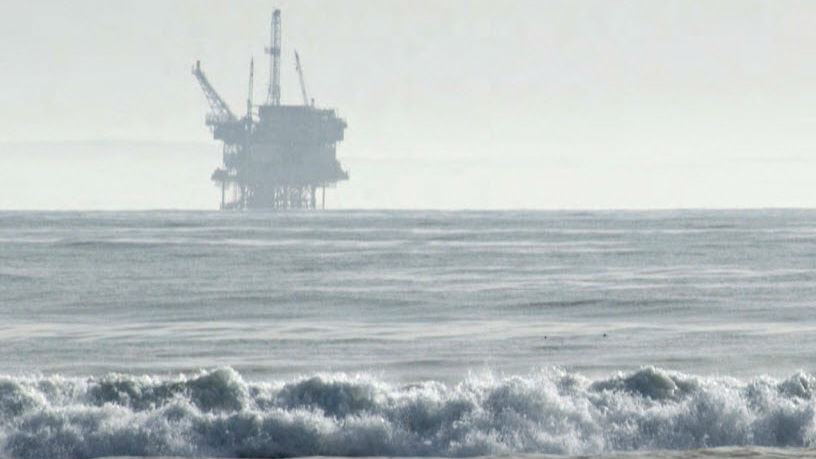California's Offshore Fracking: "No Significant Impact"

The U.S. Bureau of Safety and Environmental Enforcement (BSEE) and Bureau of Ocean Energy Management (BOEM) have found no significant impact from offshore fracking on California’s outer continental shelf.
The decision comes after a comprehensive environmental analysis evaluating the potential impacts from the use of well stimulation treatments on the 23 oil and gas platforms currently in operation on the shelf.
The Environmental Assessment evaluated several categories of treatments, including hydraulic fracturing, a range of alternatives, and all environmental resources that could potentially be impacted. The analysis indicated no significant environmental impacts associated with any of the alternatives considered.
The Environmental Assessment was conducted as part of settlement agreements to resolve lawsuits regarding the Bureaus’ compliance with the National Environmental Policy Act, Outer Continental Shelf Lands Act and Coastal Zone Management Act. Pending completion of the Environmental Assessment, BSEE agreed to withhold approvals of future drilling permits involving hydraulic fracturing.
Under the agreements, BSEE will develop a mechanism to increase transparency in the permit approval process, as well as a method to alert the public of newly submitted complete permit applications for hydraulic fracturing or acid well stimulation.
The resource areas evaluated in the offshore environment include water quality impacts from discharges of produced water, and the potential for associated impacts to fish and wildlife. Considering the low expected concentrations of well stimulation treatment chemicals and the protective nature of the EPA’s National Pollutant Discharge Elimination System General Permit and required monitoring of aquatic life, the analysis in the Environmental Assessment affirms that wastewater discharges from proposed well stimulation activities will not have a significant impact on the environment.
Accidental releases of well stimulation treatment fluids have a relatively higher potential to cause impacts, but the probability of an accident occurring and the reasonably foreseeable size of a resulting release are so small that such accidents would not be expected to cause a significant impact.
There have been 24 well stimulation treatments (21 of which involved hydraulic fracturing) on the Outer Continental Shelf offshore California between 1982 and 2014, and these were conducted on four of the 23 platforms. Reservoirs on the Outer Continental Shelf off Southern California tend to be much more permeable than onshore reservoirs, and are already highly naturally fractured. Therefore, little permeability enhancement has been required for their development. The future use of well stimulation treatments is expected to continue to be occasional rather than essential to hydrocarbon production from these platforms.
Industry Welcomes Decision
Industry body NOIA President Randall Luthi said: “Today’s final Environmental Assessment report by BOEM and BSEE reaffirms what our industry already knows: there are no significant environmental impacts from offshore fracking. Unlike the hyperbole released by many of the extreme environmental groups, the Environmental Assessment’s findings are backed by ground-truthed science and are a testament to the hardworking men and women of our industry.
“They live, work, and play at the same beaches, fishing grounds and coastal communities as millions of Americans and are dedicated to a safe and environmentally sustainable workplace. Every day they live up to some of the strictest standards in the world – standards set by both the offshore industry and by the federal government.
“We hope this report quickly ends the moratorium on well stimulation techniques offshore California. Offshore energy is a vital source of jobs and revenue for both California and the U.S., and the sooner operations offshore California can resume the better.”
More Legal Action Expected
“The Obama administration is once again putting California’s beautiful coast in the oil industry’s crosshairs,” said Miyoko Sakashita, director of the Center for Biological Diversity’s Oceans program in response to the decision. “Our beaches and wildlife face a renewed threat from fracking chemicals and oil spills. New legal action may be the only way to get federal officials to do their jobs and protect our ocean from offshore fracking.”
The finding that offshore fracking has no significant environmental impact glosses over the serious hazards of fracking and fails to answer key questions about the risks of this controversial oil-extraction technique, says the Center in a statement.
Offshore fracking blasts vast volumes of water mixed with toxic chemicals beneath the seafloor at pressures high enough to fracture rocks. At least 10 fracking chemicals routinely used in offshore fracking in California could kill or harm a broad variety of marine species, including sea otters and fish, Center scientists have found.
“It’s disturbing that officials charged with protecting our oceans are shrugging off these risks and authorizing oil companies to resume this dangerous practice. The California coast can’t take another oil spill or a deluge of toxic fracking chemicals,” Sakashita said.
